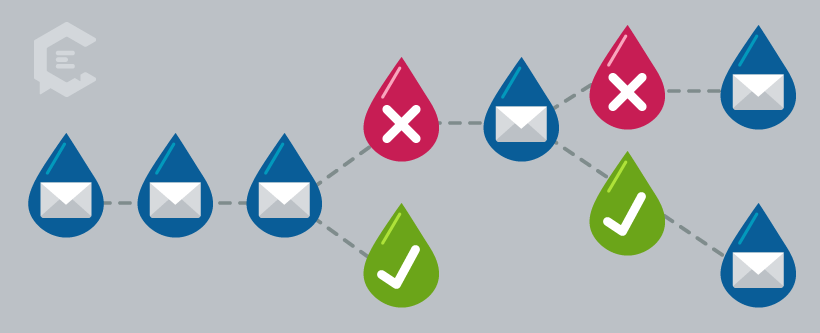Promoting content via email and social media might be popular, but with decreasing open rates and engagement, they aren’t as effective. It’s no longer enough to rely on the email blast and LinkedIn status update to distribute the content you create. To get better results, you need a more proactive approach.
In their latest content marketing survey, CMI found that almost all marketers distributed their content via email and social media. The top three social networks are LinkedIn, Facebook and Twitter.
At the same time, only 24% of marketers surveyed rated their approach as very successful or extremely successful. The bulk felt that it was moderately successful, and the rest weren’t seeing any success.
Here are five advanced tactics to add to your promotion checklist to be more successful with content marketing.
 1. The expert/influencer roundup
1. The expert/influencer roundup
There’s a right way and a wrong way to do it. If you think expert roundups don’t work, then you’ve been doing it the wrong way.
You see, influencers have caught on to this. They know that when you put together an expert roundup, you’re only including them in it so that they share it. You aren’t giving them a real reason to be excited about your post and tell the world.
But when you do it the right way, you could have a traffic-generating, viral beast on your hands. Jason Quey is a master at leveraging influencer relationships to promote posts. For example, take this post he wrote, which ranks #1 on Google for big data experts. It’s no easy feat to rank one on Google in this day and age.
Here’s how to create an expert/influencer roundup:
1. Compile a list by Googling “top <niche> experts” or something similar.
2. Use Klout and FollowerWonk to get an idea of social impact to create scores for each one.
3. Write a blurb about everyone. Don’t be lazy here. Write something custom based on your research, not a direct copy of their LinkedIn bio.
4. Reach out to influencers asking if they want anything tweaked. This is also a good opportunity to introduce yourself and build that relationship before you publish the post and ask them to promote it.
5. When it’s ready, publish it and let the influencers know so that they can share it.
Another variation of the expert roundup post is compiling quotes from experts into a regular post, like what I’m doing with this one. You’ll notice that each tactic in this post comes with a quote from an expert. I reached out to them in advance and asked them to provide me with a short paragraph of their favorite content promotion tactic. They all obliged and went above and beyond.
 2. Resurrect old posts
2. Resurrect old posts
Free, organic traffic is the Holy Grail of content marketing. In your dreams, your content launches with a bang and then continues to organically attract traffic for months and years. In reality, it dies a slow, agonizing death.
Unless you periodically go back to old posts and resurrect them. I reached out to Aaron Orendorff, Editor in Chief at Shopify Plus to extract his secrets. Here’s what he said:
“I’m definitely a sucker for epic ’roundup’ posts with meaty, original content. This B2B e-commerce article is one of my favorites because — at first glance — it doesn’t look anything like a ’roundup’ post. Done right, non-roundup roundups lend themselves to instant social promotion and can dominate distribution sites like GrowthHackers and Inbound.
Today, however, what I’m really in love with is the power of resurrecting old posts. Take something like black friday e-commerce. Over the next few months, instead of writing a swath of new posts, update and consolidate existing posts from 2017 and later will get updated and consolidated… over and over. Think of it as the Wikipedia-approach to content promotion (trademark pending, but you heard it here first).”
Aaron’s approach is less about creating new posts and promoting them, and more about refreshing older posts and squeezing additional traffic out of them.
If you look back at the content you’ve created, you may noticed that some of the earlier pieces are outdated. Maybe they aren’t optimized for the search terms you’re targeting today, or the data, links, and examples are outdated. The more outdated that post is, the less traffic it brings in.
One way to remedy this is to consolidate multiple outdated posts into one epic, up-to-date post. Start by identifying 4-6 articles that target the same search term. Update the content and then combine them into one new article. Then redirect the older posts to the new one.
Et voila! You have a new pillar post with fresh and relevant content that will start attracting more organic traffic.
 3. The email drip
3. The email drip
There was a time when you could shoot an email to your whole list the moment you published a post, and you’d get a flood of traffic. Today, you need to be a bit more creative with it. One way to do this is to create a greatest hits sequence, as explained by Brittany Berger here in this video:
This is a great way to power-up the usual blog post email.
“The evergreen sequence keeps email subscribers engaged and traffic consistent in general. But whenever I have a new piece of content, instead of writing a one-off email about it, I add the email promoting it to the top of the sequence. That way it gets sent to current subscribers right away, but it will also get sent out to all new subscribers over the next few weeks too.” – Brittany Berger
So, instead of the one-off traffic spike you get with your single email blast, you’ll start to get a more consistent and long-lasting flow of traffic to your older posts as your email list grows.
4. Use Instagram Stories
As with email, social media isn’t very effective if all you’re doing is posting to your profile, especially if you don’t already have a large following.
However, social media platforms are always coming out with new features and, even though platforms themselves are crowded, these features offer relatively greener pastures.
For example, Instagram Stories has proven to be highly engaging. Even though this functionality has been available for over a year, it’s still not saturated. Plus, the very nature of Instagram Stories, combined with the interesting features and filters, makes it fun to consume.
“While Instagram is a difficult platform to drive traffic from, Instagram Stories is proving to be an easy and effective way to promote your content to your followers. Businesses with 10k+ followers are able to add links to stories, and with the new Instagram Stories Highlights feature this content doesn’t have to disappear.” – Taylor Loren, Marketing Lead at Later, a leading Instagram marketing platform.
As Taylor mentions above, you can add links to your story. So when you publish a new post, you can create a new story describing the post, and attach a link to it for your followers to read. Instagram also shows you the metrics for each story, so you can actually see how well they’re performing!
 5. Create promotional videos
5. Create promotional videos
Stories aren’t the only place to promote your content. Facebook, LinkedIn and Twitter also allow you to create video content. Not to mention the OG video platform, YouTube.
Just like with Instagram Stories, you can create promotional videos for your content piece on these other social networks. As Tracey Wallace, Editor in Chief of the BigCommerce blog, says, it’s hard to make your content stand out on social media if you’re just posting links. Videos, on the other hand, can be eye-catching if done well.
“We’ve begun to create promotional videos for various blog posts and use those on Twitter, Facebook and Linkedin. We’ve seen a 5X improvement in post likes and shares and a 3X increase in click throughs from the social post to the content itself.
We post from our main brand channels, and I post from my own channels (given it’s me in the video). The reception has been great, and it only takes us an hour a week to knock out!” – Tracey Wallace, BigCommerce
Here’s an example of Tracey promoting one of her pieces on LinkedIn. It’s nothing flashy, just her standing in front of a camera and explaining what the post is about and, more importantly, why you should pay attention. Videos on Facebook, Twitter and LinkedIn, are usually muted, so the closed captions help.
Pick your battles
Marketing, and that includes content marketing, is a resource-optimization problem. You just don’t have the resources (time, money or people) to promote every single piece of content, especially if you’re using some of the advanced promotion tactics listed here.
Instead, figure out which ones are the most likely to make a large impact on your business, and focus your resources on promoting those. Do the usual promotion, and then use more polished tactics to push it along. For example, if you have an epic 5,000-word post coming out, you want to get the most mileage out of it. Involve influencers, add it to your drip sequences, promote it with Instagram Stories, and then go back periodically to resurrect it.
 1. The expert/influencer roundup
1. The expert/influencer roundup 2. Resurrect old posts
2. Resurrect old posts 3. The email drip
3. The email drip 5. Create promotional videos
5. Create promotional videos


